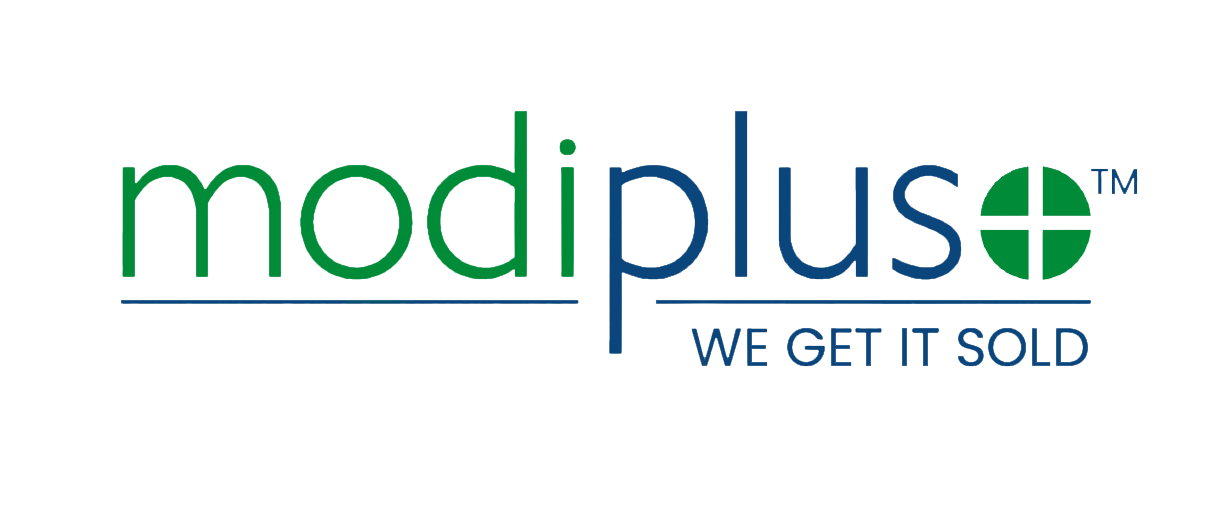Blog Layout
First time buyers guide to identifying a target pharmacy
Modiplus • October 22, 2020
Finance experts Umesh Modi and Vinku Shah advise first-time buyers on the steps they should take to make the acquisition a smooth process…
We summarise some of the factors to consider when identifying a target pharmacy.
1) Location
It is important to note that a good opportunity rarely lands on your doorstep and therefore you may need to look further afield for the pharmacy that meets your requirements. Once you have identified that pharmacy, you should also research the environs of the target pharmacy for example whether there are any surgeries nearby, what is the closest competition, is there regular passing traffic, parking availability, any planned regeneration of the area, etc. All these factors although not exhaustive, can have an impact on the business and therefore should not be overlooked.
2) Dispensing base
A pharmacy with a higher number of dispensing items (usually 5,000 items dispensed per month on average and above) is generally attractive as it reflects the big patient base although such pharmacies tend to have a higher price but are also attractive for lenders provided the buyer has sufficient security, funds, etc. If the target pharmacy has a lower number of dispensing items, you should research thoroughly whether there is scope for increasing the numbers.
3) Growth potential
Turnover and profitability growth are important factors to consider when purchasing a pharmacy for example are there any services currently not being offered which could add to the turnover and in turn increase profitability. A review of the current overheads could also help identify areas where costs can be reduced for example is the pharmacy relying heavily on locums? Are there any leases for equipment and can these be renegotiated with better terms?
4) Turnover split
Usually the turnover would be made up of NHS remuneration, over-the-counter sales (OTC) and service income. OTC and service income usually has a greater margin than NHS turnover and therefore as a buyer one should consider whether there is scope for increasing these so that it adds to the overall profitability. One should also consider if there is scope to increase the NHS turnover – this would be the case where the percentage of electronic prescriptions to total items dispensed is below 90%.
5) Gross profit
The gross profit is calculated as turnover less the cost of buying drugs that have been sold and when taken as a percentage of sales, it ranges between 25% - 35%. A pharmacy with a gross profit of 25% usually indicates that the buying of the drugs is not efficient and there is room for improvement through scouring for deals with the suppliers. Higher margins are achieved through higher greater services income.
6) Staffing costs
Staff salaries, National Insurance Contributions and pensions are the highest overhead for community pharmacy, and these should be reviewed. The staffing costs should be generally 6 - 8% of total turnover for an owner managed pharmacy. Legal advice should be sought if staff are not to be retained post completion as redundancy costs may have to be paid.
7) Innovation
With the community pharmacy sector becoming more competitive, it is important to streamline repetitive processes to create time for the provision of value-added services which will increase the patient base and lead to long term growth. There are various innovative products available in the market for example investment in robots for dispensing which will also attract tax relief as well as improve the bottom line in the long run. Alternatively leasing of equipment could ease cashflow as well as reduce the corporation tax as the lease rentals will be tax deductible.
8) Premises
If the vendor owns the freehold of the premises from which the pharmacy operates, they may offer to sell it although it is a rare occurrence. In such a scenario, the buyer should get an independent valuation of the premises to ensure that they are not overpaying for the premises. If the premises are offered as leasehold, it is very important that the lease can be assigned to the buyer. Generally, the lease should be in line with the term of the mortgage if borrowing from a bank for example, if borrowing for a term of 15 years then the lease should have an unexpired term of at least 15 years. If there is a long enough lease in place already, then you should check on when the rent review dates are as you will need to reflect this in your projections.
9) Financing
It is important that the buyer has sufficient level of funding and security in place to complete the transaction. This would generally cover the purchase price, legal and professional fees for solicitors and accountants, valuation fees, payment for stocks if agreed separately, net assets in case of a company purchase, etc.
It is advisable to engage with a pharmacy specialist lender early in the transaction as they will be able to advise you on the lending requirements.

By Modiplus
•
February 26, 2025
Welcome to our Winter Newsletter! Pharmacy market trend and buyers’ appetite If you are thinking of selling your pharmacy, there is still a demand for pharmacies across the country as the market remains buoyant. The pharmacy market has seen an increase in the number of pharmacies entering the market and completed sales. This is driven by economic pressures, fiscal policies, lack of funding, and exit of larger multiples from the market, such as Lloyds Pharmacy and Boots, which has led to the rise of independents and consolidations. The appetite remains strong from the first-time buyers, with independent and smaller chains the most active in the pharmacy acquisitions. Valuation calculations We have also seen the valuation of pharmacies improving, and on average we are achieving a goodwill price of 85p to 90p in £1 of turnover for standard hour contracts. Demand for pharmacies with a turnover of more than £750k to £1.5m with healthy profits is particularly attractive for the first-time acquisitions or an existing independent operator looking to expand. Below is a range of estimated valuations, if you are looking to sell: -

By Modiplus
•
August 29, 2024
Welcome to our Summer Newsletter and we trust that you are enjoying the late summer weather! This summer has been extraordinary so far, full of sporting events such as football, tennis, cricket and the Olympic games! We have been very busy in the last quarter, whereby we have seen the first-time buyer appetite remain strong. Similarly, we have seen an increase in the number of sales enquiries of smaller pharmacies while others are holding off awaiting the outcome of the new funding and success of Pharmacy First scheme. On average we are achieving goodwill price of between 85p to 90p in £1 of turnover at present. The average profit margin has shown an improvement to 32% despite medicine shortages. Data from Pharmacy First (NHSBSA) The launch of the Pharmacy First has gone off with a positive start, it has been very encouraging to see so many patients benefiting from this scheme, and your exceptional efforts in delivering these services have been commendable. However, we note that monthly payments are still critical, and concur that it is completely unreasonable for pharmacy to be penalised financially for the NHS’ failure to drive public and GP referrals. The NHS Business Services Authority (NHSBSA) has released figures for the Pharmacy First Service covering the period of February to April 2024 as follows: -

By Modiplus
•
April 16, 2024
Welcome to the spring edition of our quarterly newsletter Initial reaction to Pharmacy First Recent research conducted by AIMp found that 70.8% of the pharmacy owners do not think there is sufficient funding allocated for the scheme, 20.8% say it is too early to say and just 8.3% responded saying it was adequate. Their #Fight4Pharmacies campaign was also launched on 20 March 2024 outside Parliament which created an extensive amount of interest with the media and politicians. The success of the Pharmacy First scheme will vary and depending on factors such as local implementation, public awareness, pharmacist training etc. To address funding shortfalls, pharmacy owners need to explore other options such as reallocating resources, securing additional funding and enhancing relationships with GPs. Pharmacy contract and funding The old contract has expired, however, there is no news regarding the pharmacy funding negotiations. The negotiations are taking place between Community Pharmacy England (CPE) and the Department of Health and Social Care (DHSC) , supported by NHS England (NHSE) . The reasons for the sale of community pharmacies The sale of community pharmacies can occur for various reasons and under different circumstances as follows: - Retirement - You may choose to sell your business when you reach a retirement age or decide to exit the profession for personal reasons. Selling the pharmacy allows you to liquidate your assets and transition into retirement. Relocation - Changes in your personal circumstances or opportunities in a different location may prompt you to sell and move elsewhere. Relocation could be due to family reasons, lifestyle preferences, or professional opportunities. Financial reasons - Financial challenges or the desire to capitalise on the value of the pharmacy may lead you to consider selling. This could include factors such as declining profitability, changes in reimbursement rates, or the need for additional capital investment. Expansion or consolidation - A multiple may acquire as part of their expansion or consolidation strategies. Selling to a larger entity can provide you with higher value in some cases. Launch of Pharmacy First and providing new services - The running of pharmacies has undergone several changes over the years, particularly with increased automation, digitalisation, and expansion of online services. The model has gone through a complete overhaul. We are seeing lots of our clients for whom we provide accountancy services at Silver Levene who are struggling with Pharmacy First services due to staffing issues which is resulting in decline of their profit margins. Market dynamics - Changes in the healthcare landscape, regulatory environment, or consumer behaviour may influence your decision to sell. Adapting to evolving market conditions or responding to competitive pressures may involve selling the pharmacy to a buyer better positioned to navigate these challenges. Following large corporate disposals, we are now seeing the goodwill value increase compared to last quarter, which makes it an ideal time to exit, if you are looking to sell. With bank interest rates likely to go down from June, affordability becomes easier too. Succession planning - You may sell your pharmacy as part of succession planning efforts, either transferring ownership to family members or grooming internal staff to take over management. Selling the pharmacy ensures a smooth transition of ownership and management responsibilities. The sale of community pharmacy is typically a complex process that involves legal, financial, and regulatory considerations. You as pharmacy owners may work with sales agents, financial advisors, or legal professionals to facilitate the sale and ensure compliance with relevant laws and regulations governing pharmacy ownership and operation. If you are thinking of selling, it is paramount to get your house in order and speak to your accountant well in advance and prior to putting the pharmacy on the market. We can provide accountancy and taxation services through our associated company Silver Levene with a proven track record of over 30 years. Changes in ownership With last year’s corporate disposals, the tide has turned, and more pharmacies are now run by independents compared to corporates. The recent Sigma conference in South Africa highlighted this issue, as shown in the table below courtesy of RWA Pharmacy:
Thinking of Selling Your Pharmacy?
Address
Level 5A, Maple House
149 Tottenham Court RoadLondon, W1T 7NF
Contact Us
All information on this site is provided in good faith. Modiplus cannot be held liable for any inaccuracies or loses incurred should you act upon this information. Modiplus is trading name of Modiplus Limited, registered in England – 04489336
© 2025
All Rights Reserved | Modiplus Limited


